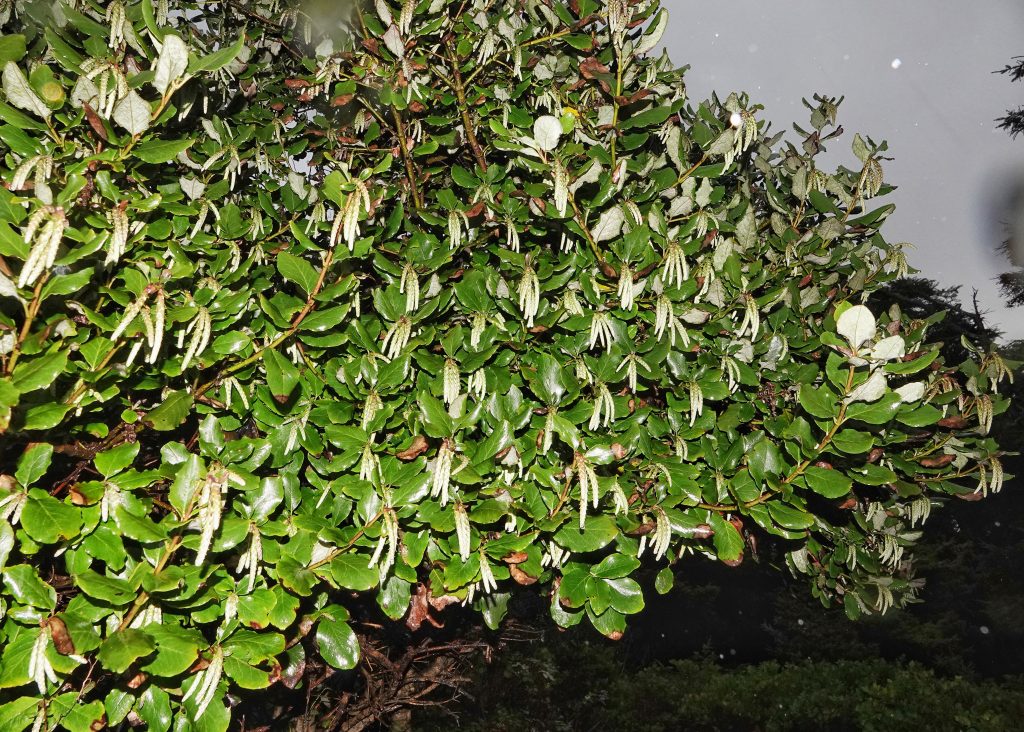
I first found this plant in October of this year, at Devils Churn, just south of Yachats, Oregon, although I had no idea what it was. When I edited my photos and figured out that it was Garrya elliptica I also realized that that plant was very near the northern end of the range of this species, and that because it was so striking that I thought it was an ornamental (in addition to some problems with shutter speed, f-stop, and apparently salt spray on my lens) I didn’t have enough good photos for a profile.
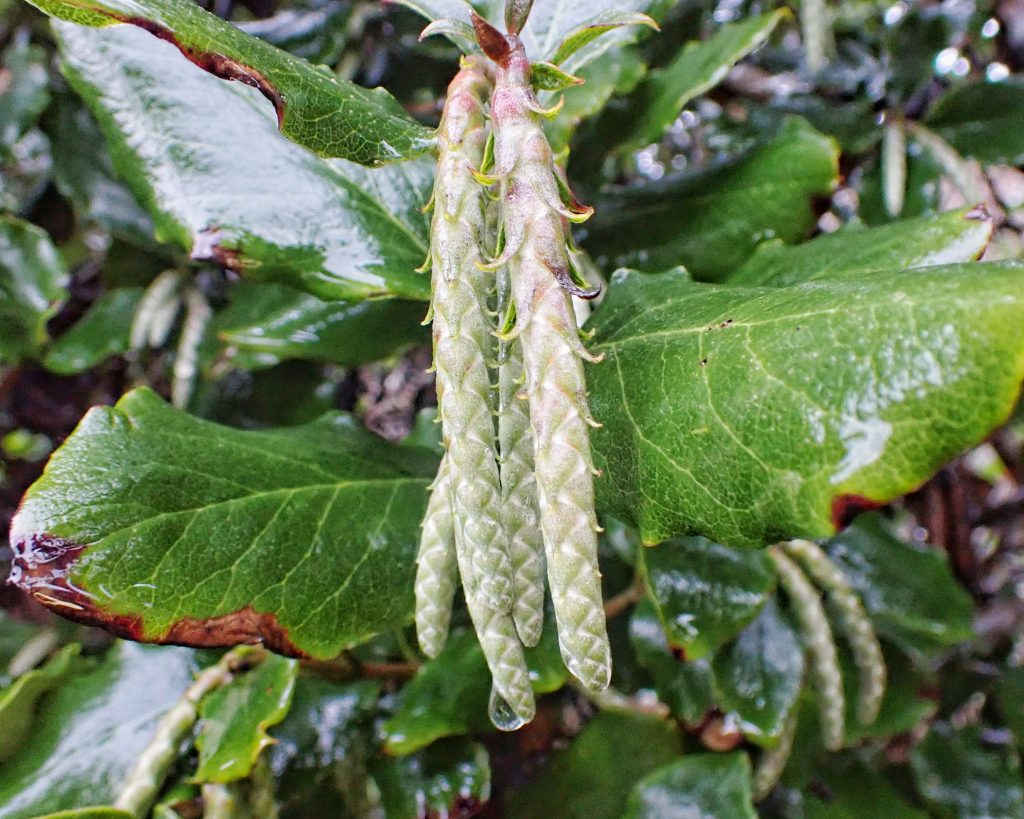
Thus it became imperative that I hie myself to Cape Perpetua again, and record some decent documentation. This member of the family Garryaceae (of which Garrya is the sole American genus) flowers in winter, and I had hoped to find it in bloom when I visited Devils Churn on my November excursion to that area, but alas I was disappointed (looks like I needed to wait until at least December), though I did manage to get decent (but not great) photos between hailstorms.
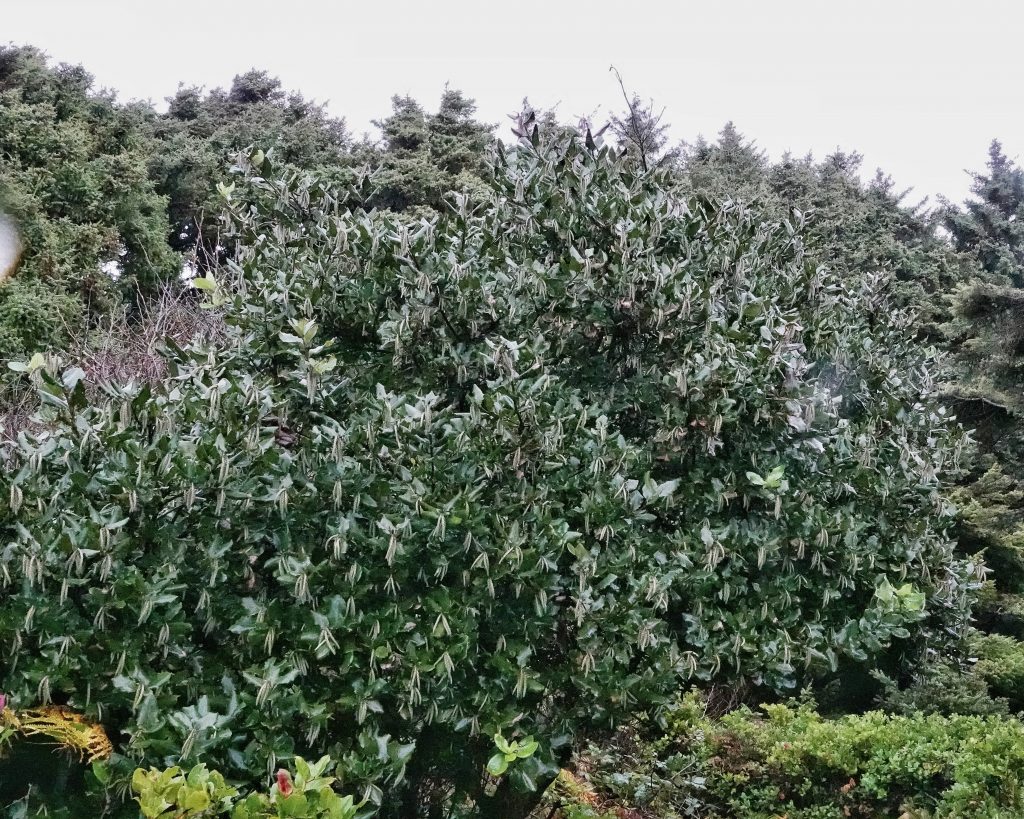
Garrya elliptica (often called coast silk-tassel, silk tassel bush or wavyleaf silktassel) is an evergreen tree or shrub. This is a handsome plant, with a spherical crown, nicely textured foliage, and catkins that look like silk tassels until they burst into flower, and I wasn’t wrong to think it might be an ornamental tree, since it apparently often is, especially in Western Europe and se Australia and Tasmania, where it has now also become naturalized. I’m sure the winter flowering is also a big plus in its popularity, since any spot of color is welcome during the grey months.
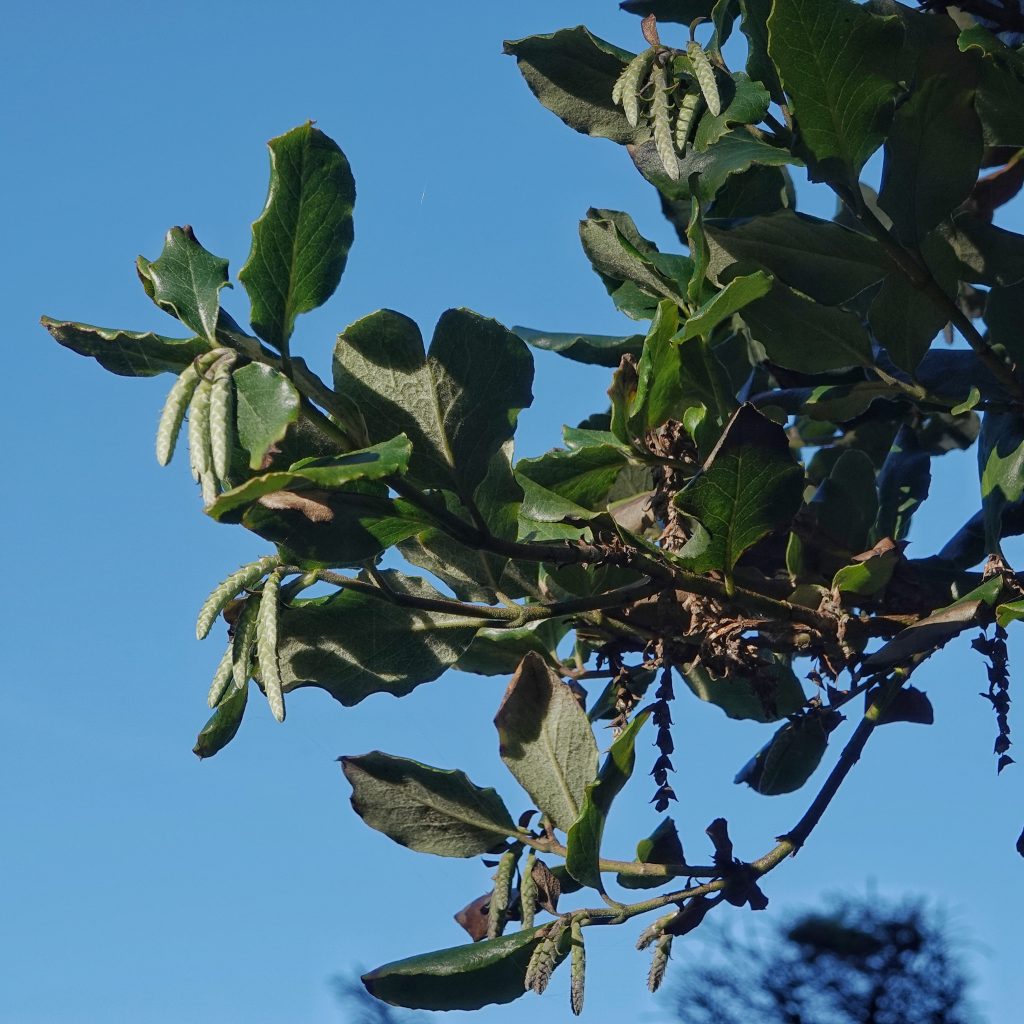
It’s possible that Garrya elliptica is moderately allelopathic, since at least one study (Cameron et al.; 1984) found that extracts from the catkins retards growth in wheat and peas. The only ethnobotanical uses I can find are that the Pomo tribe used an infusion of the leaves to induce menstruation, and the Yurok used limbs hardened in fire to prise mussels from their moorings.
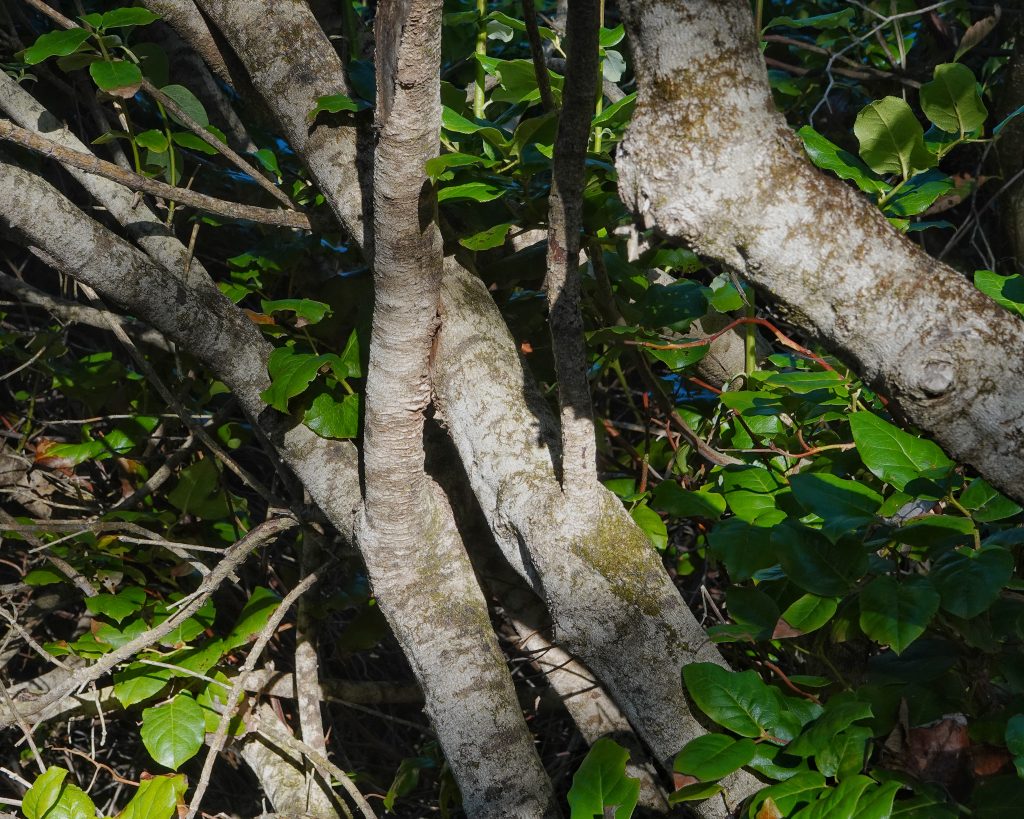
Description-Tree or shrub (7-23’ tall) with evergreen leaves, greyish brown bark, and twigs that are green and hairy, turning brown and smooth with age; leaves are dark green above, densely hairy white below, 2-3” long, leathery, oblong to egg-shaped, with wavy margins; inflorescence is a linear catkin, pendent, 3-6” long, somewhat silky before blooming, that bears flowers that are pink, petal less, and have joined sepals; dioecious, with male and female flowers on separate plants.
Similar species–Garrya fremonti and G. buxifolia do not have leaves with wavy margins; Ceanothus spp. also do not have wavy margined leaves, and have sprays of flowers.
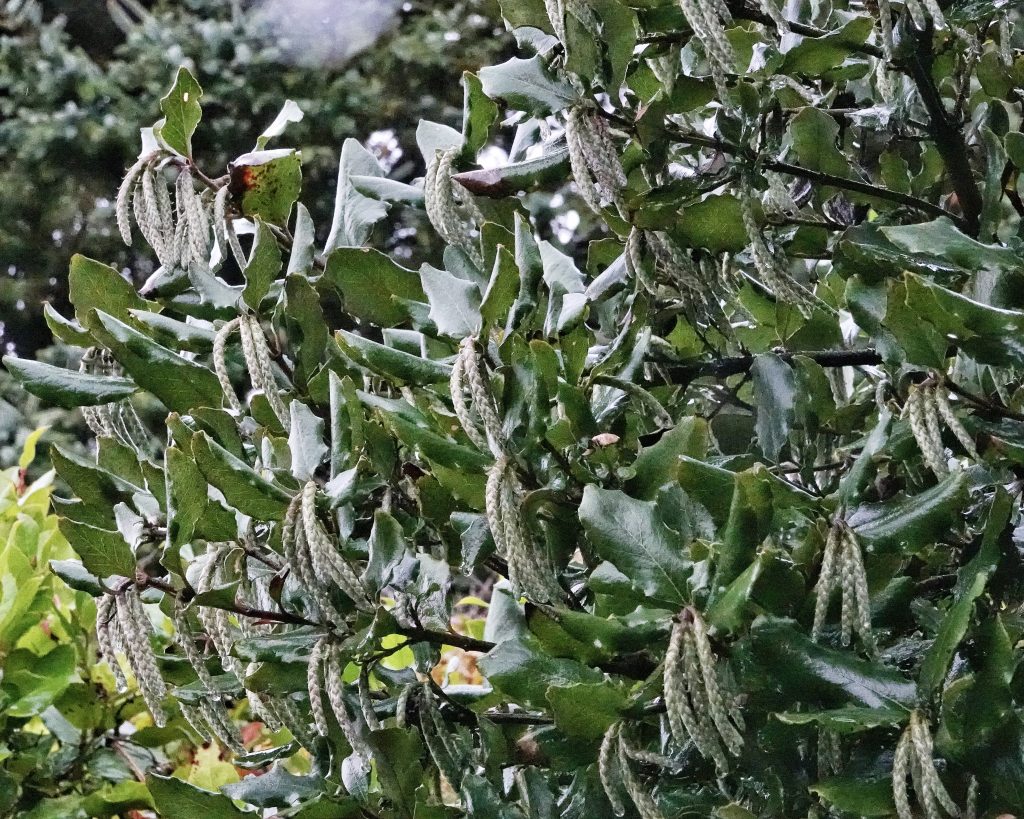
Habitat-Sea cliffs, dunes, sandy riverbanks and chaparral, in areas with marine air influence, up to 3,000’ elevation.
Range-Native from Yachats, Oregon south to LA, California; frequent cultivar, which has escaped near some metropolitan areas in the PNW, and has become naturalized in Western Europe and se Australia and Tasmania.
Reproductive timing-Blooms December to March
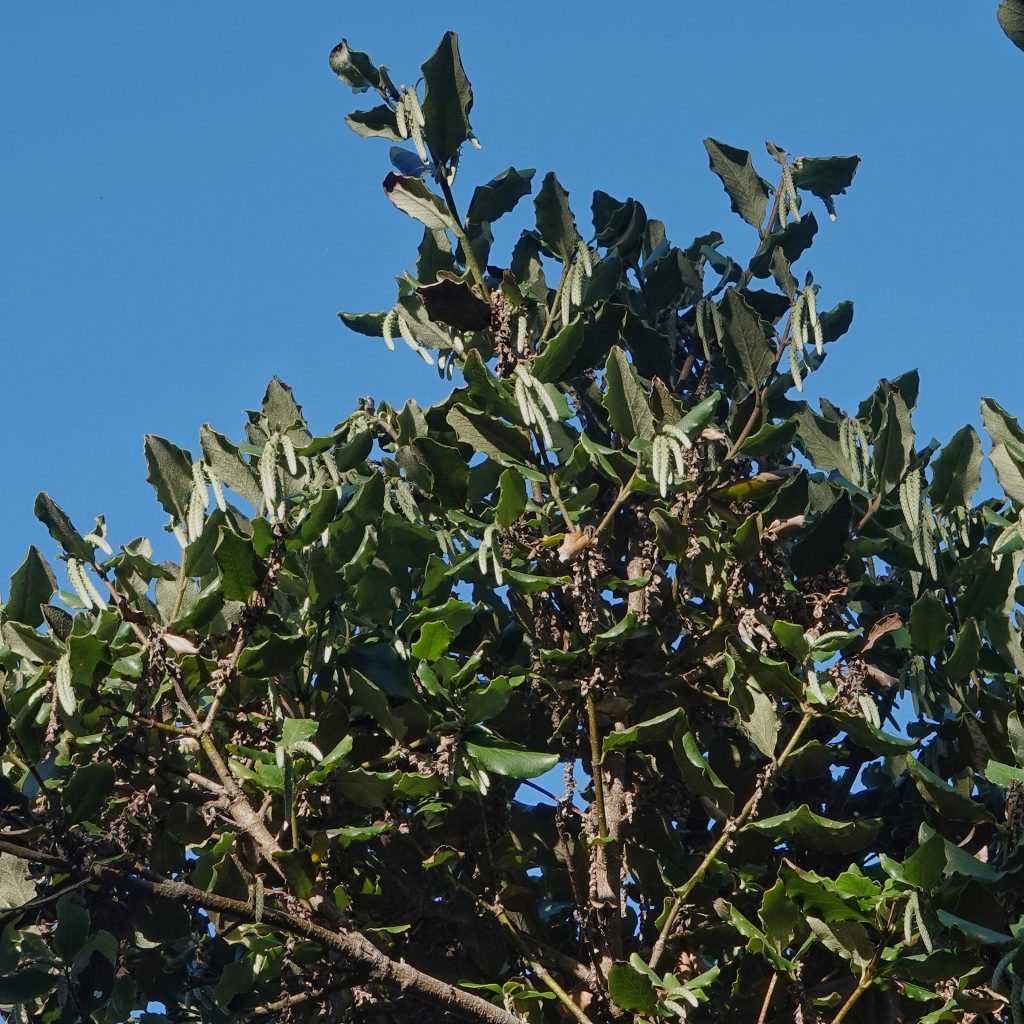
Eaten by– Larvae of unspecified moths in the genus Saphenista have been found on this species; it’s possible that leaf mining flies in Liriomyza, and leaf mining moths in Marmara utilize this as a larval host, since they use other Garrya, but I can’t verify that; birds eat the fruits; gardening sites call it deer resistant.
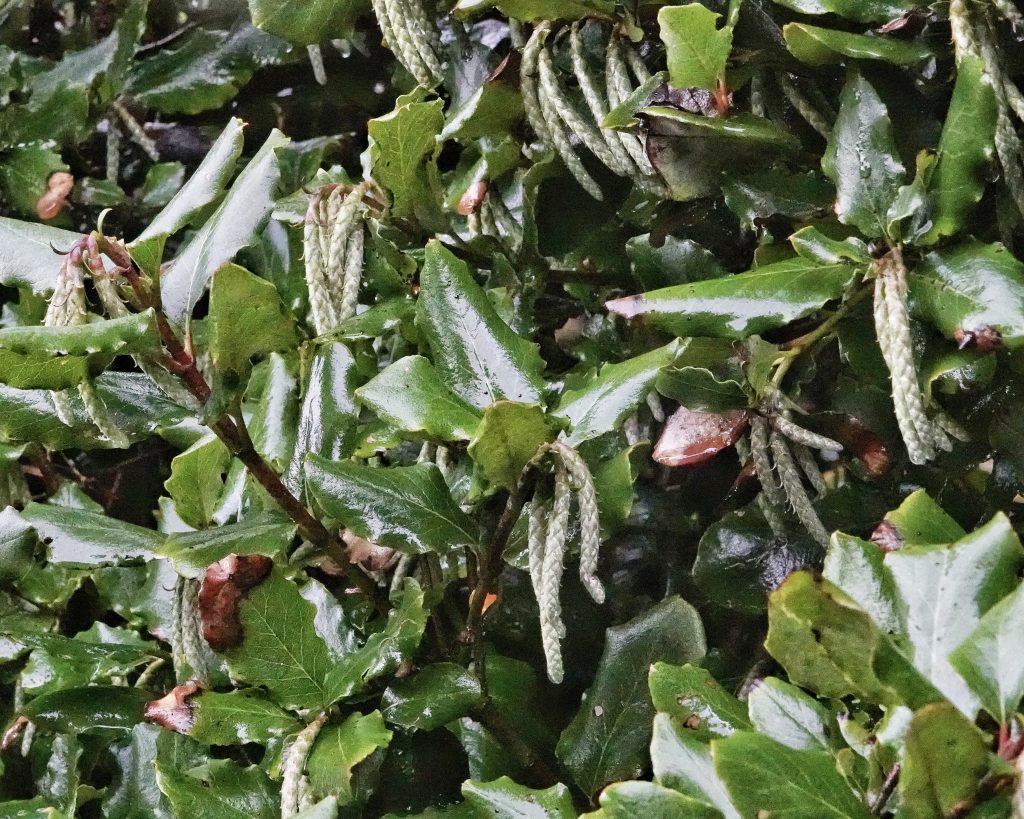
Etymology of names–Garrya honors Nicholas Garry (1782-1856) deputy-governor of the Hudson Bay Company, a friend and benefactor of David Douglas (who introduced this plant to the gardeners of the British Isles) that assisted on Douglas’ plant collecting expeditions to the Pacific Northwest, and he is also honored in the name of the Oregon White Oak, Quercus garryana. The specific epithet elliptica is from the Greek word for ‘twice as long as broad’, or ‘oblong with rounded ends’, and refers to the shape of the leaves.
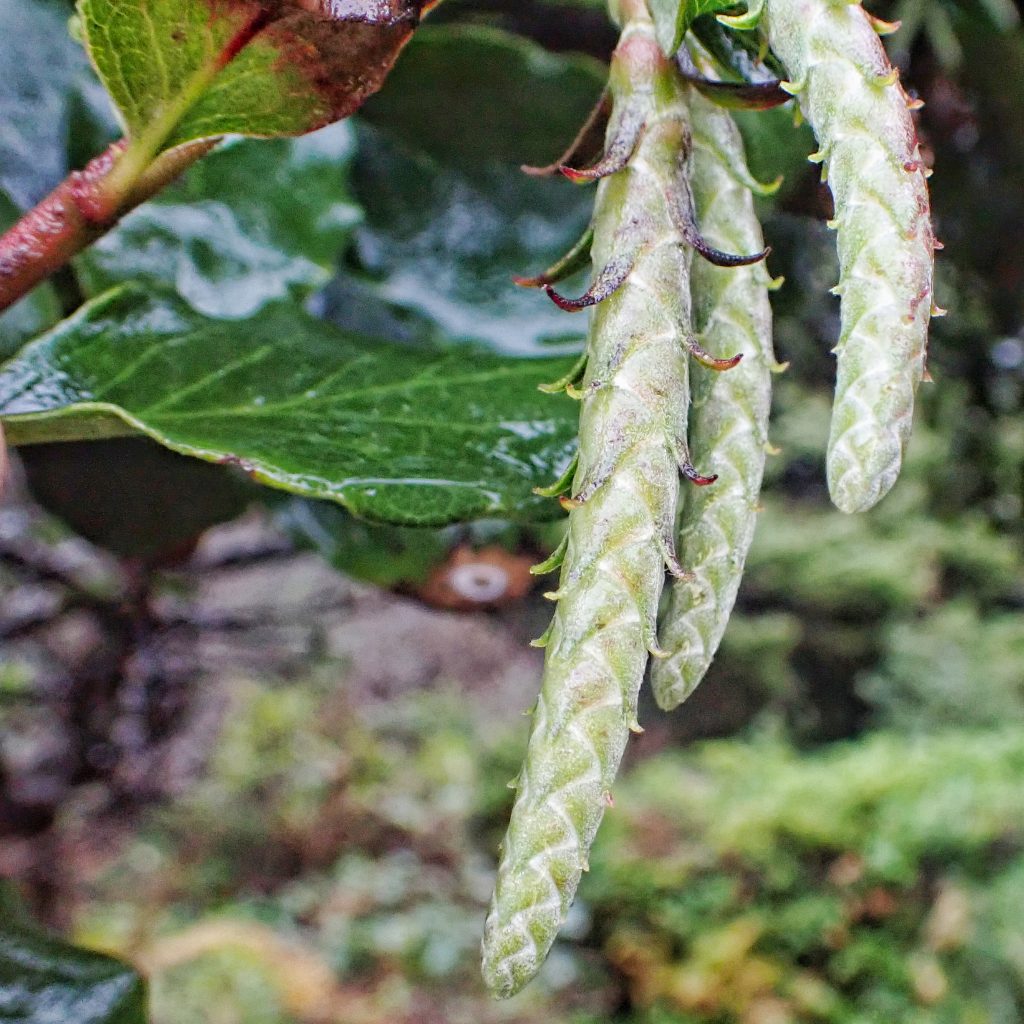
Wavyleaf Silktassel, Garrya elliptica
Garrya Elliptica — SLO Botanical Garden
Sci-Hub | Iridoids of garrya elliptica as plant growth inhibitors | 10.1016/s0031-9422(00)80374-x
BRIT – Native American Ethnobotany Database
https://en.wikipedia.org/wiki/Nicholas_Garry
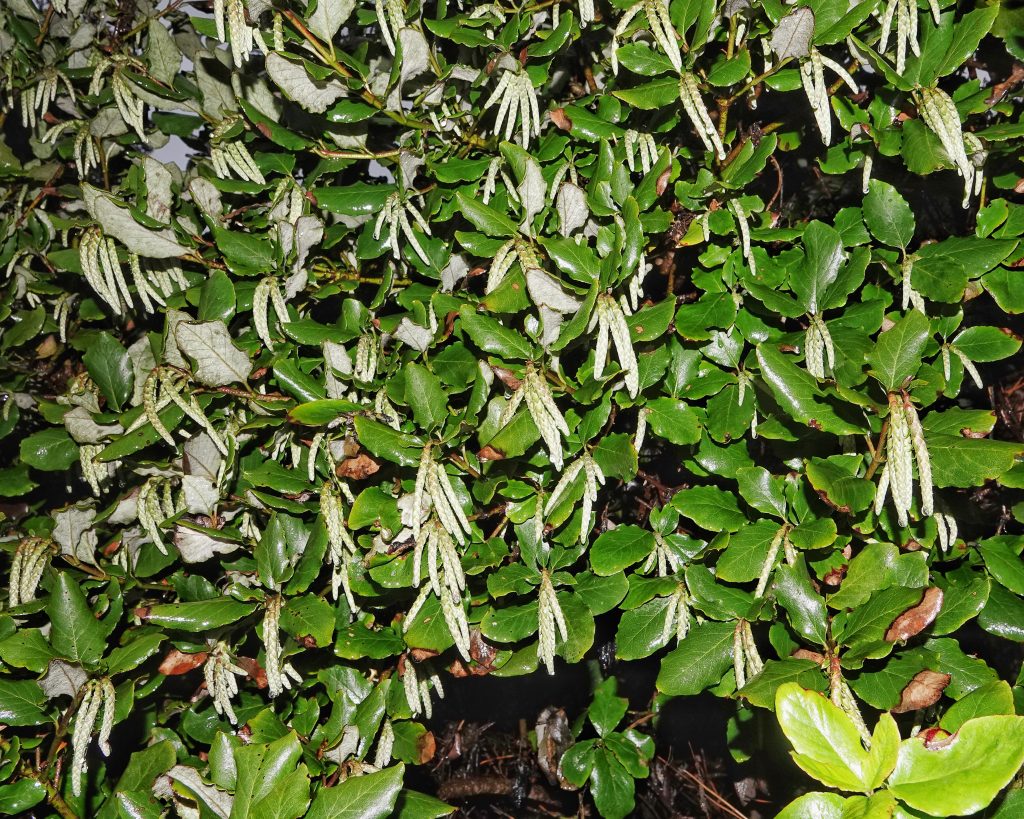
This plant is well known in local gardens as well. The selected variety, James Roof with extra long catkins is favored.
It is a handsome one! If I didn’t live in an apartment I would want to have one in my garden. Thanks, Kim!
I admire this shrub. I have a nice specimen in Shoreline, north of Seattle WA. It was introduced many years ago at the Seattle Locks garden. I think but am not sure that was by Carl English.
Thanks for sharing that with us!